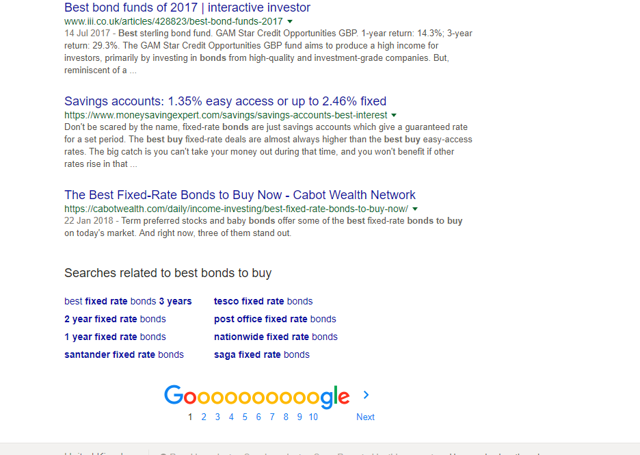Here are our 8 top tips for drawing more readers to your articles via search:
Tip #1: Write a great, relevant title
The most important thing that decides whether people click on your article is your headline – make sure it’s compelling, while staying true to the content of the article.
Ask yourself: What question does my article answer for readers? Then construct the title around that. Keep the title short to avoid truncation; limiting it to 2 lines will ensure it won’t get cut off on SA interfaces, Google results, and partner sites.
Select your best titles and try them out on a few friends. Feel free to ask the editors to help you, in a note on your submission. We also offer a title test feature that lets you test more than one title (as well as a title suggested by editors), conduct a live test among readers, and has the article published automatically with the winner.
Tip #2: Include an interesting picture or chart, and tag it
Google picks up the primary image in your article to display next to the headline. If you make sure that the first image is relevant and interesting, and includes a meta tag (these are content descriptors that tell search engines what a web page is about), it will increase clicks to your article. If you have more than one image in your article, you can choose your marketing image on the second page of the article submission interface.
Here’s how to add a tag: The “insert/edit image” icon on the editing toolbar (it looks like a postcard, to the right of the dollar sign) can be used to upload an image saved locally on your computer, or to edit an image that’s copy-pasted into your submission (make sure to click on the image before using the icon). In the dialog box, where it says “Image description,” add a caption to your image that will clearly describe the image in terms that users may be searching for. Use plain and simple text that best conveys the image and its relevance to the topic at hand.
Tip #3: Use powerful header wording and our subheader format
The Section Header button on the submissions form should be used to create subheadings. The button looks like a capital H, and it’s on the far left of the tool bar at the top of the form. This is better for SEO because it makes headers more visible in search.
Similar to titles, subheaders should be designed to answer readers’ questions: What are they likely thinking about this stock? Spell out relevant points out in clear and direct headers, and watch your search performance improve.
Ideally, the terms used in your titles, captions, and section headers should all be clearly connected to search terms readers are likely using to surface content on the idea being discussed. Look into related keywords around the main topic and use those in the title/bullets/headers, if you can do so naturally. Here is a screenshot of related keywords and where to find them (the bottom of the search results page):
Tip #4: Publish a focus article (with a primary ticker)
If you haven’t yet published an article with a primary ticker, we strongly urge you to try your hand at one. Articles tagged with a primary ticker – a stock/ETF in focus – will get the most exposure, as they are sent out as real-time alerts (RTAs) to subscribers of those tickers. Keep in mind that in order to qualify as a focus article, the analysis must thoroughly and squarely focus on the primary ticker.
Tip #5: Link to authoritative sites
You may have been asked by editors, in feedback on your submissions, to link to sources to support your ideas. The significance of these sources cannot be overstated, especially if you link to authoritative sites such as government websites, Seeking Alpha articles (yours or other authors’), and other established media sites. Try to avoid smaller, lesser known sites that lack the credibility Google rates highly.
Tip #6: Avoid too-brief articles
Longer articles do better in search, period. An overly sparse article (less than 500 words) can be a disappointing experience for readers, so fleshing out your ideas can lead to an increase in followers as well.
Tip #7: Share!
It’s hard to overestimate the positive effect sharing has on your article’s reach. Sharing gets your article shown in the social feeds of your connections. If they share it, it gets shown in the social feeds of their connections too. Google indexes sharing to understand how much users engage with an article and drive search results.
At the very least, be sure to use your own Facebook, Linkedin, and Twitter accounts to share each of your articles.
Tip #8: Engage in the article comment streams
Participate in the comment stream on articles, especially your own. Articles are oftentimes just the springboard for discussion and active communication, and there’s nothing quite as valuable as the original author being a part of the conversation. In many cases, readers will ask questions and raise issues that can also serve as the kernel for a follow-up article on the same topic.
Most of all, readers and fellow contributors appreciate your continued input, and it helps grow the base of readers who follow you. As you know, the more followers you have, the more people get notified when you publish a new article, and the more traffic is generated.
Have questions or thoughts about the tips discussed here? Please sound off in the comments section below.
Disclosure: I/we have no positions in any stocks mentioned, and no plans to initiate any positions within the next 72 hours. I wrote this article myself, and it expresses my own opinions. I am not receiving compensation for it. I have no business relationship with any company whose stock is mentioned in this article.
